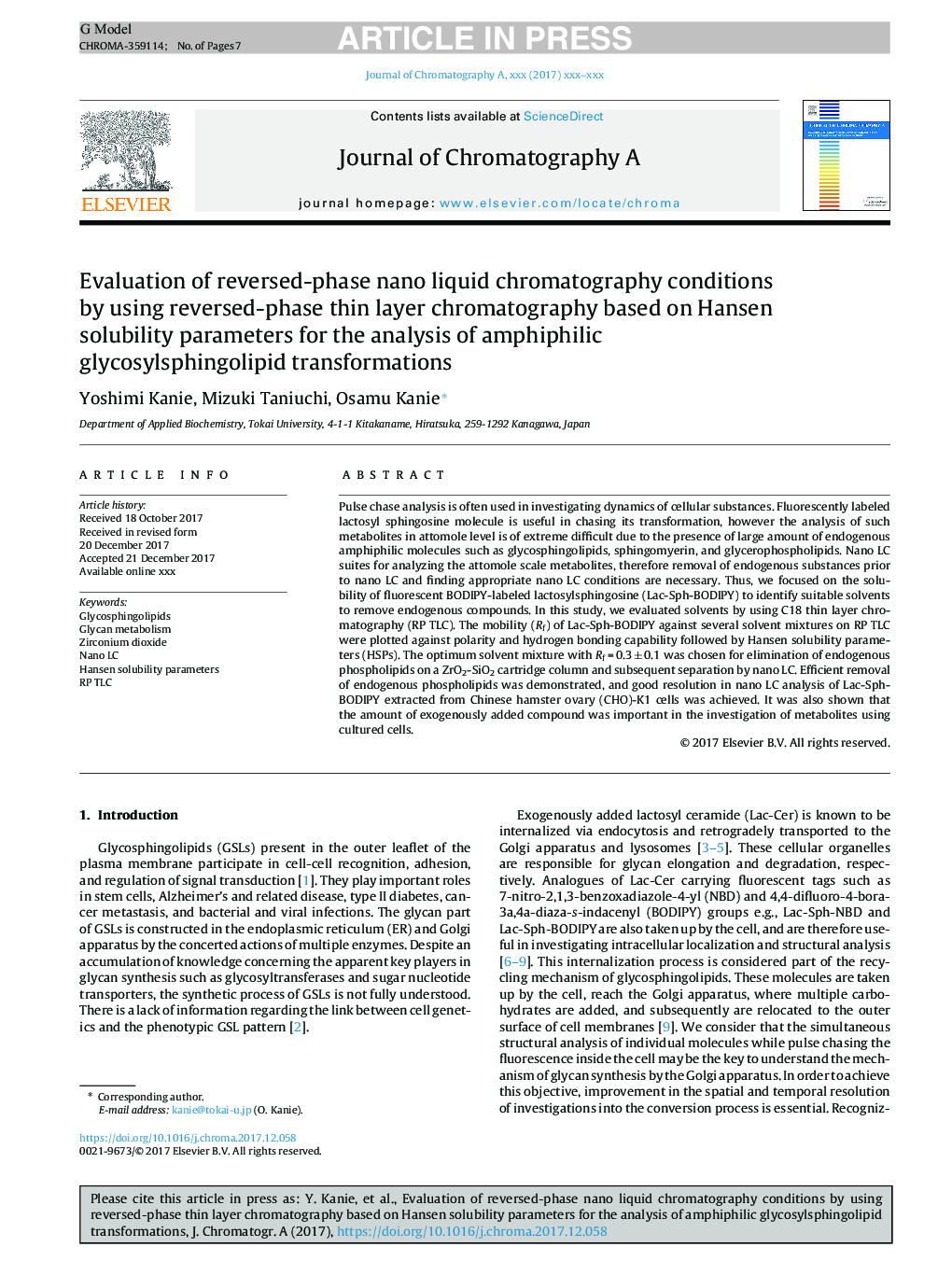| Article ID | Journal | Published Year | Pages | File Type |
|---|---|---|---|---|
| 7609016 | Journal of Chromatography A | 2018 | 7 Pages |
Abstract
Pulse chase analysis is often used in investigating dynamics of cellular substances. Fluorescently labeled lactosyl sphingosine molecule is useful in chasing its transformation, however the analysis of such metabolites in attomole level is of extreme difficult due to the presence of large amount of endogenous amphiphilic molecules such as glycosphingolipids, sphingomyerin, and glycerophospholipids. Nano LC suites for analyzing the attomole scale metabolites, therefore removal of endogenous substances prior to nano LC and finding appropriate nano LC conditions are necessary. Thus, we focused on the solubility of fluorescent BODIPY-labeled lactosylsphingosine (Lac-Sph-BODIPY) to identify suitable solvents to remove endogenous compounds. In this study, we evaluated solvents by using C18 thin layer chromatography (RP TLC). The mobility (Rf) of Lac-Sph-BODIPY against several solvent mixtures on RP TLC were plotted against polarity and hydrogen bonding capability followed by Hansen solubility parameters (HSPs). The optimum solvent mixture with Rfâ¯=â¯0.3â¯Â±â¯0.1 was chosen for elimination of endogenous phospholipids on a ZrO2-SiO2 cartridge column and subsequent separation by nano LC. Efficient removal of endogenous phospholipids was demonstrated, and good resolution in nano LC analysis of Lac-Sph-BODIPY extracted from Chinese hamster ovary (CHO)-K1 cells was achieved. It was also shown that the amount of exogenously added compound was important in the investigation of metabolites using cultured cells.
Related Topics
Physical Sciences and Engineering
Chemistry
Analytical Chemistry
Authors
Yoshimi Kanie, Mizuki Taniuchi, Osamu Kanie,
